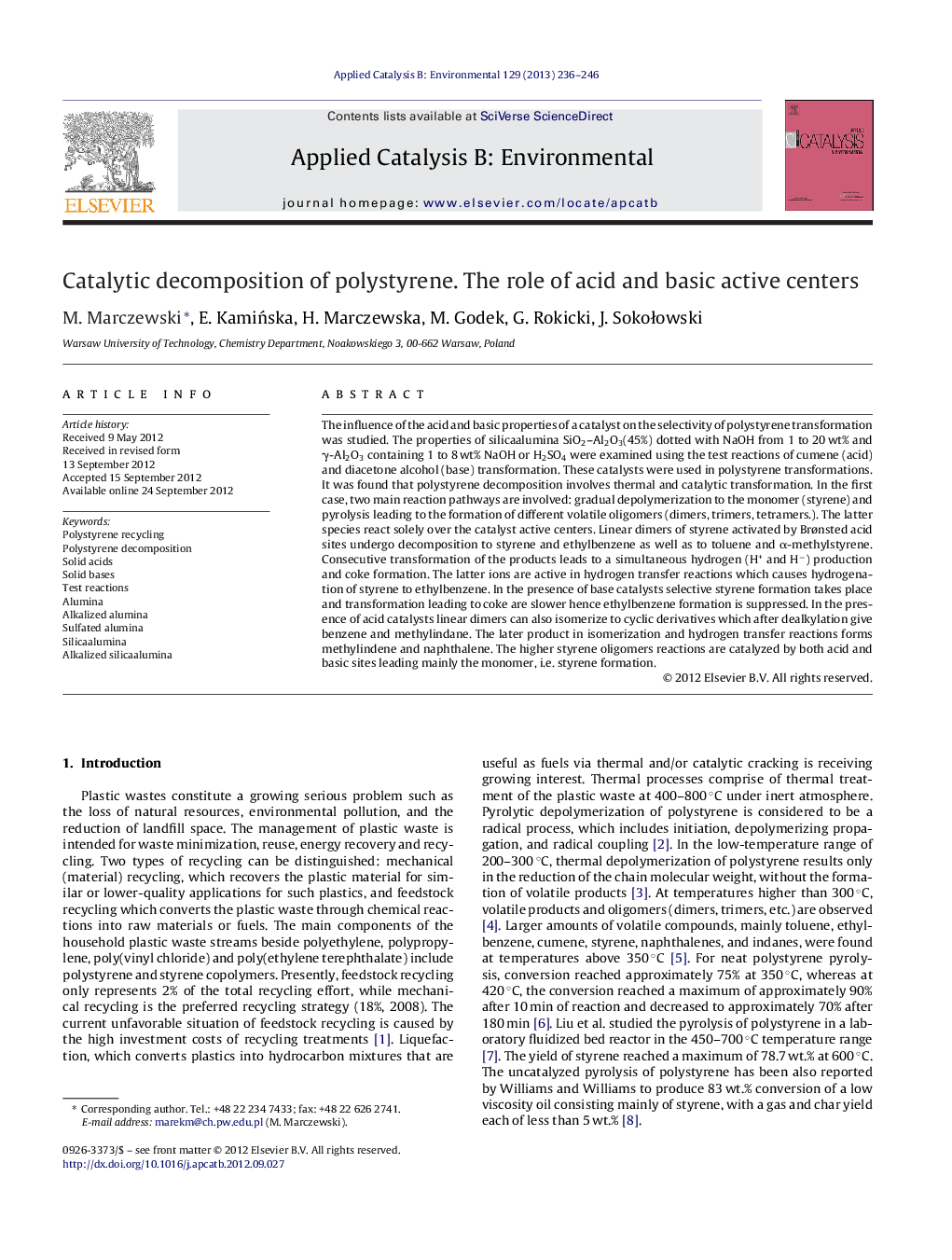| کد مقاله | کد نشریه | سال انتشار | مقاله انگلیسی | نسخه تمام متن |
|---|---|---|---|---|
| 46003 | 46428 | 2013 | 11 صفحه PDF | دانلود رایگان |

The influence of the acid and basic properties of a catalyst on the selectivity of polystyrene transformation was studied. The properties of silicaalumina SiO2–Al2O3(45%) dotted with NaOH from 1 to 20 wt% and γ-Al2O3 containing 1 to 8 wt% NaOH or H2SO4 were examined using the test reactions of cumene (acid) and diacetone alcohol (base) transformation. These catalysts were used in polystyrene transformations. It was found that polystyrene decomposition involves thermal and catalytic transformation. In the first case, two main reaction pathways are involved: gradual depolymerization to the monomer (styrene) and pyrolysis leading to the formation of different volatile oligomers (dimers, trimers, tetramers.). The latter species react solely over the catalyst active centers. Linear dimers of styrene activated by Brønsted acid sites undergo decomposition to styrene and ethylbenzene as well as to toluene and α-methylstyrene. Consecutive transformation of the products leads to a simultaneous hydrogen (H+ and H−) production and coke formation. The latter ions are active in hydrogen transfer reactions which causes hydrogenation of styrene to ethylbenzene. In the presence of base catalysts selective styrene formation takes place and transformation leading to coke are slower hence ethylbenzene formation is suppressed. In the presence of acid catalysts linear dimers can also isomerize to cyclic derivatives which after dealkylation give benzene and methylindane. The later product in isomerization and hydrogen transfer reactions forms methylindene and naphthalene. The higher styrene oligomers reactions are catalyzed by both acid and basic sites leading mainly the monomer, i.e. styrene formation.
Figure optionsDownload as PowerPoint slideHighlights
► Catalytic decomposition of polystyrene over acidic and basic catalysts was studied.
► PS reaction consist of: thermal degradation and consecutive catalytic cracking.
► Solid acids transform linear styrene dimers to aromatics and cyclic styrene dimers.
► Solid acids transform cyclic styrene dimers to indane, indene and naphthalene.
► Acidic and basic catalysts transform higher styrene oligomers to styrene.
Journal: Applied Catalysis B: Environmental - Volume 129, 17 January 2013, Pages 236–246